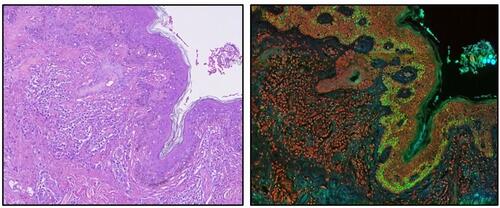Molecular Classification Improves Method to Diagnose Gliomas
By LabMedica International staff writers
Posted on 29 Jun 2015
The molecular makeup of brain tumors can be used to sort patients with gliomas into five categories, each with different clinical features and outcomes. Posted on 29 Jun 2015
The molecular finding could change the methods that physicians rely on to determine prognosis and treatment options as previously they relied on how patients' tumors look under the microscope.

Image: Histopathology of an oligodendroglioma showing the characteristic branching, small, chicken wire-like blood vessels and fried egg-like cells, with clear cytoplasm and well-defined cell borders (Photo courtesy of Nephron).
A large team of scientists led by those at the Mayo Clinic (Rochester, MN, USA) studied a total of 317 cases and 789 controls from the Mayo Clinic series, which were used as the discovery set in this study; also 351 cases and as many as 4,504 controls depending on the Single Nucleotide Polymorphism (SNP) being analyzed from the University of California, San Francisco (UCSF; CA, USA) Adult Glioma Study were used as the first replication set. The team explored whether three tumor markers could be used to define molecular groups that better inform glioma treatment.
The investigators scored tumors as negative or positive for 1p/19q codeletion, isocitrate dehydrogenase (IDH) mutation and telomerase reverse transcriptase (TERT) mutation in 317 gliomas from the Mayo Clinic Case-Control Study. The scientists then compared patient characteristics among the top five molecular groups (triple-positive, TERT- and IDH-mutated, IDH-mutated-only, TERT-mutated-only, and triple-negative) and found that the patients within each group had similar age of onset and overall survival.
The results of the study will enable clinicians to make better predictions about which specific treatment course is necessary for each individual patient. For example, the team found that the molecular classification can identify patients with histologically defined lower-grade tumors who have less favorable outcomes and deserve more aggressive therapy.
Robert B. Jenkins, MD, PhD, a professor and senior author of the study said, “These molecular groups could represent distinct types of gliomas, with different origins and paths to progression. Now that we know more about the germline alterations that predispose to these tumors and the ensemble of mutations that are associated with each type of glioma, we can start thinking about building models of the disease that can help us find new therapies to precisely target specific types of glioma.”
Daniel H. Lachance, MD, a neuro oncologist at Mayo Clinic, and lead author said, “Our findings are going to weigh heavily on the future classification of brain tumors. The time of classifying these tumors solely according to histology as astrocytoma, oligodendroglioma or mixed oligoastrocytoma could be a thing of the past. This molecular data helps us better classify glioma patients, so we can begin to understand who needs to be treated more aggressively and who might be able to avoid unnecessary therapies.” The study was published on June 10, 2015, in the New England Journal of Medicine (NEJM).
Related Links:
Mayo Clinic
University of California, San Francisco











.jpg)

